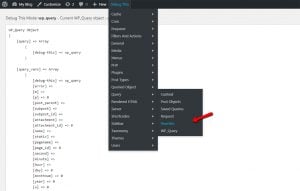How do I optimize videos for various platforms and screen sizes?
Optimizing videos for various platforms and screen sizes is crucial for ensuring a seamless user experience across different devices and platforms. As a website developer and someone interested in online marketing, you likely understand the importance of delivering high-quality content. Let’s delve into the steps and strategies to optimize videos effectively:
- Choose the Right Video Format:
- Start by selecting an appropriate video format. Common formats include MP4 (H.264 codec), WebM, and Ogg. MP4 is widely supported and is a good choice for compatibility.
- Resolution and Aspect Ratio:
- Consider the most common screen resolutions and aspect ratios. For example, 16:9 is standard for desktops and most mobile devices. Ensure your videos are available in various resolutions to accommodate different screen sizes (e.g., 720p, 1080p, 4K).
- Video Compression:
- Compress your videos to reduce file size without compromising quality. Use video editing software or dedicated compression tools. Popular options include HandBrake and FFmpeg.
- Bitrate Control:
- Adjust the video bitrate to balance between quality and file size. A higher bitrate delivers better quality but results in larger files. For web use, consider adaptive streaming formats like HLS or DASH, which adjust the bitrate based on the viewer’s internet speed.
- Adaptive Bitrate Streaming (ABR):
- Implement ABR techniques to serve different quality levels based on the viewer’s device and internet connection. This ensures smooth playback on a variety of devices.
- Mobile Optimization:
- For mobile devices, consider using lower resolutions and bitrates. Use media queries in your website’s CSS to serve different video files based on the screen size and device type.
- Video Codecs:
- Opt for modern video codecs like H.265 (HEVC) for higher compression efficiency. However, keep in mind that not all devices and browsers support these codecs, so you may need to provide fallbacks.
- Video Thumbnails:
- Create engaging video thumbnails that are optimized for different platforms. Thumbnails should be clear, eye-catching, and representative of the video’s content.
- Metadata and SEO:
- Add relevant metadata, including titles, descriptions, and tags. Use keywords strategically to improve search engine visibility. Platforms like YouTube offer tools for optimizing video metadata.
- Testing and Analytics:
- Test your videos on various devices and browsers to ensure compatibility. Use analytics tools to monitor user engagement and make improvements accordingly.
- Content Delivery Network (CDN):
- Utilize a CDN to distribute your videos efficiently. CDNs deliver content from servers located closer to the user, reducing load times and ensuring smoother playback.
- Accessibility:
- Provide closed captions and subtitles for your videos to make them accessible to a broader audience, including those with hearing impairments.
Here’s a sample HTML code for embedding a responsive video on a webpage:
<video controls width="100%" height="auto">
<source src="video.mp4" type="video/mp4">
<source src="video.webm" type="video/webm">
Your browser does not support the video tag.
</video>
In this code, the video element is set to a width of 100%, ensuring it adjusts to different screen sizes. It also provides multiple source options for different video formats to ensure compatibility.
By following these optimization techniques, you can deliver high-quality videos that perform well on various platforms and screen sizes, enhancing user engagement and SEO efforts for your digital agency’s clients.

YouTube
YouTube videos are in a 16×9 widescreen format, with YouTube shorts in a vertical 9×16 format. This makes YouTube shorts feel “mobile first.” The broader video format has a more filmic and televisual format.
Keep this in mind when creating videos for both formats. Shoot the video with the focal point very much in the center of the frame. This way, you can crop it effectively without losing the essential content or quality of the image. If it’s a talking head, give lots of space to the sides if shooting horizontally and above and below it if shooting vertically.
If you have created a vertical video and wish to adapt it for a widescreen format, there are lots of creative ways in which you can “pillarbox” the video with graphic elements to the left and right of the moving image. Tools such as clipchamp and wave.video allows you to do this very simply. Adobe Premiere and Premiere Rush can similarly scale this process with template projects.
The same goes for adapting a widescreen video for YouTube shorts. You can “letterbox” the video with some bars featuring supporting text or imagery. This is a reasonable alternative to cropping the video entirely. Especially if the content doesn’t look very good in a different aspect ratio. For example, when the video features a single wide shot of two people.
Facebook allows for a wider variety of aspect ratios than YouTube, and videos presented in the feed can fit all shapes and sizes.
You can post videos in 16×9 (standard widescreen landscape), 4:5 (old-style TV format, but vertical), 1:1 (square), and 6×19 (vertical phone) formats. For Facebook Stories, videos are in the 9×16 vertical format.
Therefore, Facebook can accept most video formats created initially for other distribution platforms without adaptation. Sometimes, letterboxing 16×9 videos to turn them into 4×5 and adding supporting text that adds context when the video is viewed silently can help, so it’s worth testing different formats for your particular videos and seeing which gets the best engagement.
The tools for optimizing presentation with the different YouTube formats also apply to Facebook.
Instagram works like Facebook. It supports multiple formats but it presents the videos slightly differently.
Instagram reels in the feed will show as 4×5 vertical. When clicked through, present as 9×16 vertical, so a taller image. You must create and post videos that work creatively in both formats. Make sure you can crop them from 9×16 to 4×5 and comprehensively contain the core work.
For assets that start as 16×9 widescreen videos, this generally means letterboxing them with supporting text. For videos that start as 9×16 mobile videos, this means just ensuring any overlays or animated elements on top are within that core 4×5 frame of the video so they don’t get cropped off by the platform automatically.
Instragram Stories are ostensibly the same as Facebook Stories. Videos are only available as 9×16 vertical pieces. Reposting Reels/Feed videos with some supporting text above and below the videos is a common way of repurposing them for Stories.
In theory, LinkedIn supports a wide variety of aspect ratios. But in practice, you’re better off sticking to landscape widescreen 16×9, or 1:1 square videos. 9×16 vertical videos get automatically pillarboxed.
Stick to 16×9 for those videos with wider shots with landscapes, multiple people, and a more filmic style. For simple talking heads or animations, use 1:1 videos because they take up a bit more screen real estate in the feed.
If you’re shooting vertical videos for Instagram stories or TikTok, etc., and wish to give them further life on LinkedIn, just leave enough space at the top and the bottom of the video without too much going on to look good when cropped.
TikTok
TikTok videos are 9×16 vertical and designed to be shot with a phone. There’s often enough space for a whole body, e.g., the initial use case of dancing videos. You must adapt 16×9 widescreen videos considerably for TikTok. They tend not to perform well when only superficially changed with letterboxing.
Accordingly, you must create videos for TikTok exclusively with the platform in mind. Although videos used in Instagram Stories and YouTube shorts are naturally well formatted for TikTok.
Best practice principles for optimizing video on different platforms
You must consider where the video will live for the plethora of social media and video platforms available today. Do this before shooting it so you can plan to edit and optimize the content for the device and format it will be presented.
Generally speaking, videos will be one of two types of creations.
They can be primarily filmic, i.e., 16×9 horizontal creations made horizontally with a camera or phone. These will feature wider shots, probably different levels of zoom, and relatively small camera movement. This is the type of thing you’ll typically make for your website or YouTube
Alternatively, they can be mobile videos, i.e., 9×16 creations, shot vertically on a phone. They tend to be closer, focusing on a single subject matter, often with large amounts of camera movement. This is the type of thing you’ll typically make for TikTok, YouTube shorts, and Instagram Stories.

